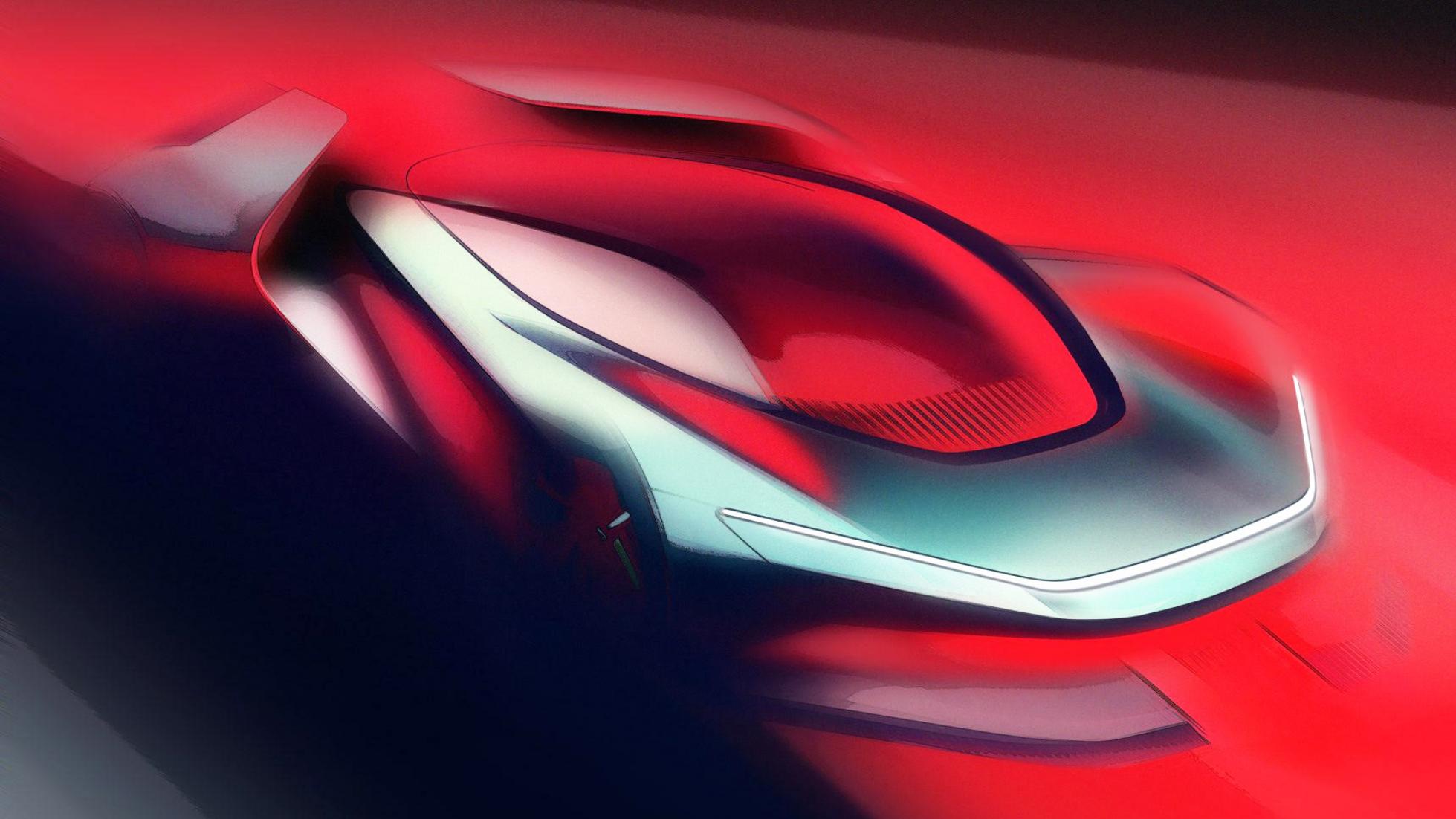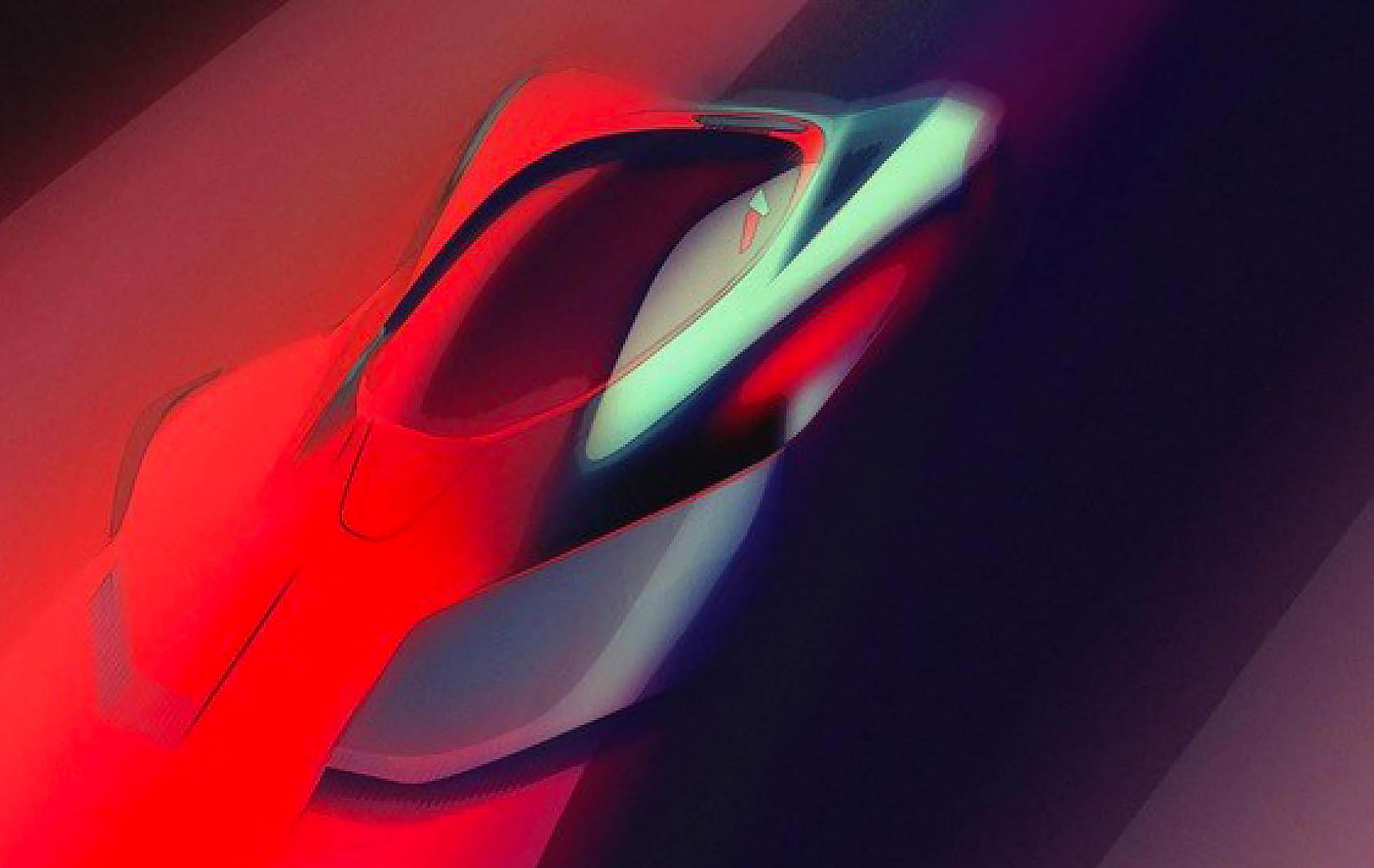New 402kph Pininfarina 'PF0' electric hypercar: first look

Automotive start-ups love EVs. And they especially love supercar EVs. Minimal brand recognition doesn’t hurt when you’re talking (on-paper) insane performance figures, and concept car-nutty styling. But when the start-up in question is called Pininfarina, well this seriously gets your attention.
How many of the most beautiful cars ever made have worn the Pininfarina logo? Correct: more than you could shake a delicious giant bread-stick at, and not just Ferraris for that matter. Is Pininfarina well-placed to deliver a pure-electric hypercar that could stand shoulder-to-shoulder with the best that AMG, Aston Martin, Ferrari, Pagani, and Porsche can do? Totally.
Following last week’s announcement in Rome, we know that Automobili Pininfarina will exist as a separate entity from Pininfarina SpA, that the new car will be designed by the amiable and absurdly talented Luca Borgogno (the man responsible for the 2010 Stratos reboot beloved of TG), and that the electrical architecture will be supplied by newcomer Rimac. No more than 90 are likely to be made, at a cost close to £1.7m (RM8.8m) a pop.
The body will be made of carbon fibre, the lights connect in a continuous strip left-to-right and feature an element that references the Seventies staple pop-up headlights, while the batteries will be housed behind the occupants and along the sides. The cockpit, meanwhile, is truly audacious, with a ‘vanishing point’ aspect to the main display, and an evident driver-centric layout. It looks genuinely fabulous, as it must with that weight of history bearing down on it.
Remember the performance claims? Course you do. Zero to 100kph in less than two seconds, 300kph in less than 12, onto a top speed of 402kph, with a projected range of 310 miles (499km) from the batteries (though not if you’re travelling at 400kph).
The question is, will it really happen? Former boss of Audi India, Michael Perschke, is Pininfarina’s CEO. “We now face a 30-month race to deliver our promise and the Pininfarina family’s dream: sustainable luxury, hyper-performance, and beautiful electric cars branded Pininfarina,” he says. “Our first car, codenamed PF0, will define us by its looks, performance and respectful integration of the Pininfarina heritage.”
The back-story is significant, not least because a plan this bold needs a backer with, if not fathomless pockets, then certainly pretty deep ones. Following various collaborations, the legendary Italian carrozzeria was acquired by Indian industrial giant Mahindra – it’s into cars, farm machinery, and energy, has 39,000 employees and $9.4bn in assets – back in 2015, a key factor in the project’s viability. TG was granted an audience with the company’s urbane and ultra-bright executive chairman Anand Mahindra – a graduate of Harvard’s film school, no less – during last weekend’s Formula E race in Rome (Mahindra has run a team in electric racing series since day one). He’s clear about the opportunity, and why Pininfarina is the correct brand to realise what is, by any reckoning, a fairly substantial ambition.
“This will enable us to fulfil our vision of participating at the very pinnacle of automotive design and manufacturing,” he says. “We believe we can’t stretch the Mahindra brand too far out, nor can you stretch the Pininfarina name too far down. Luxury is the meeting point of heritage and craftsmanship, which is what Pininfarina has. You can’t just create that. It would take 90 years to build what Pininfarina has.”

He also believes that the rise of self-driving EVs will split car use into three distinct categories: functional commuter cars “in which the brand might play a very minimal role”, according to Mahindra, who points to an extant deal his company has with the Indian government, and also a tie-up with Uber; cars bought by people who want to use them for recreation or at weekends; and thirdly, “cars that are bought purely because they are objects of desire, out of passion, passion for performance and beauty”.
Although he acknowledges the scale of the challenge, Mahindra is clear-eyed, romantic perhaps, but no dreamer. “If you’re aiming for middle-of-the-road goals, you short-change yourself and you’ve already lost the battle. This car is unique, and it will be unparalleled in beauty and performance. You have to shoot for that.”
The EV aspect is also critical. Automobili Pininfarina intends to develop the car with the right partners, rather than sinking a fortune into R&D and sabotaging the economic argument for going there in the first place. In this respect, Apple is a more apposite example than, say, Bugatti or Porsche.
“I love Bugatti,” Anand Mahindra says, “and it was the dream of a true visionary to rejuvenate the brand. We all agree on that. But the amount of money you’d need to invest to take on the Chiron… if you choose your weapon well and you do it with electric technology, you can achieve it with a lower level of investment. If you talk to the best companies in the world, it is possible to do it. Ambitious yes, impossible no.”
The PF0 will be manufactured at Pininfarina’s Cambiano facility – “it will never be made in Mumbai,” Mahindra insists, “that’s never going to happen. As I say, 88 years of heritage is what differentiates us from California-based start-ups with Chinese investment” – and the new company will be “customer-centric, design-focused, and sustainable.
“Is it a sure-shot? No. Is it something that has a better chance of working than at Nissan or Toyota? Yes, because we are not creating something out of thin air. Pininfarina is not created out of thin air, and all Italians know that.”
And what of life beyond the ultra-exclusive hypercar? Mahindra doesn’t want to be Tesla – “our strategy doesn’t include a Model 3” – and nor does he think the rise of EVs spells the end of days for internal combustion. “I don’t see the demise of ICE in my lifetime,” he says. “In fact, I believe electrification will lead to a new generation of more efficient petrol engines. The technologies will co-exist for some time yet.”
Rarely will we have watched this space more closely.

